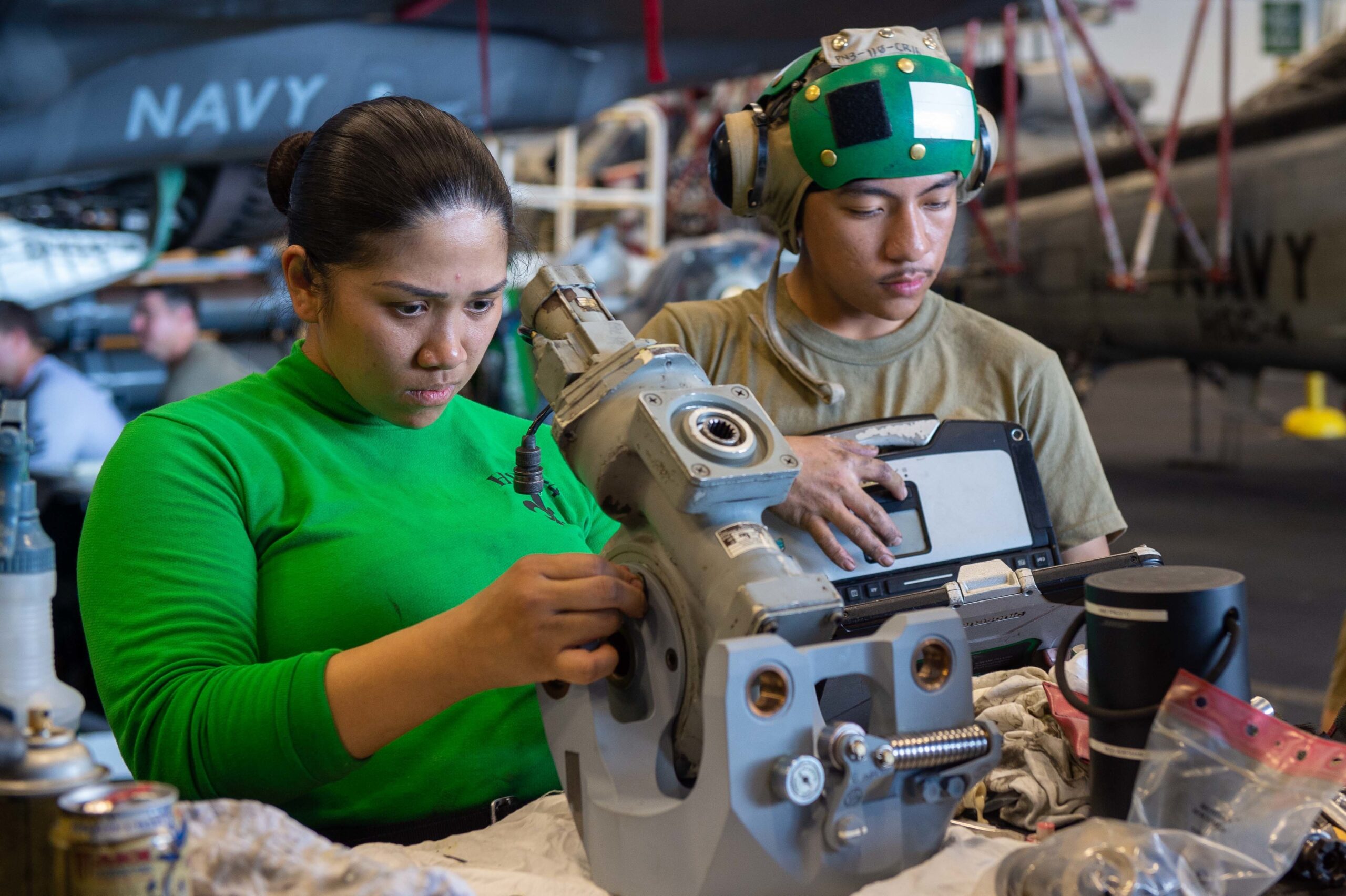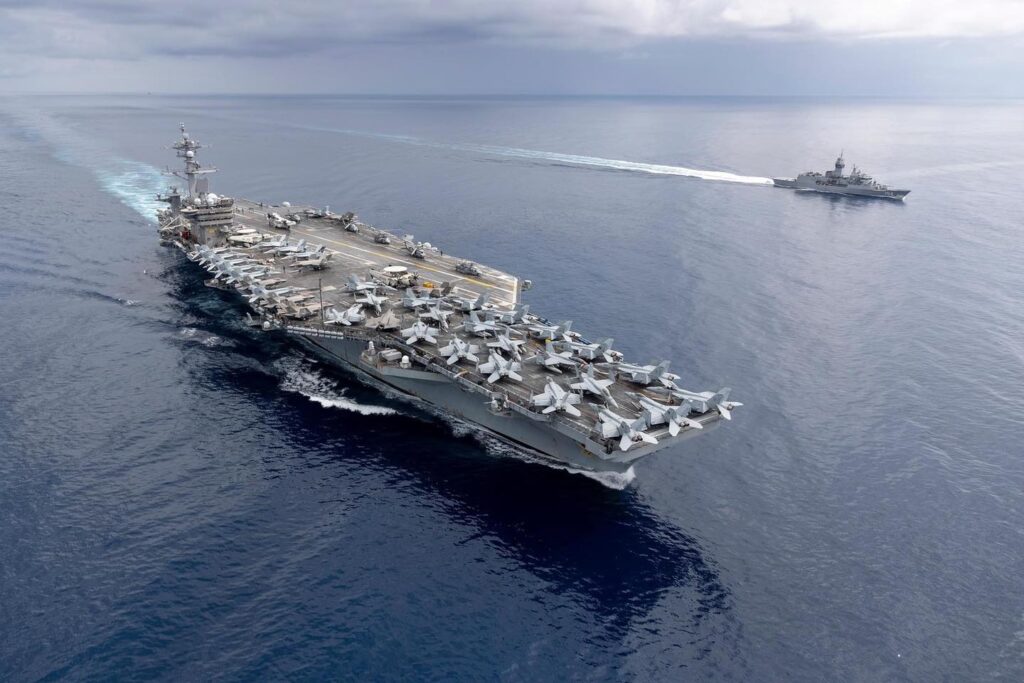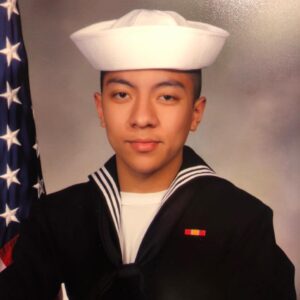
211213-N-MD461-1080 INDIAN OCEAN (Dec. 13, 2021) Aviation Machinist’s Mate 1st Class Joan Onia, left, a native of San Diego, and Aviation Machinist’s Mate Christian Salcedo, a native of Pittsburgh, Calif., assigned to the “Black Knights” of Helicopter Sea Combat Squadron (HSC) 4, perform maintenance on a blade-fold motor in the hangar bay of Nimitz-class aircraft carrier USS Carl Vinson (CVN 70). (U.S. Navy photo by Mass Communication Specialist 3rd Class Jeff D. Kempton)
By Stephanie Fox, Navy Office of Community Outreach, Media Outreach Department
Aviation Machinist’s Mate Christian Salcedo, a native of Pittsburg, CA, is assigned to the “Black Knights” of Helicopter Sea Combat Squadron (HSC) 4, aboard the USS Carl Vinson (CVN 70).
The Carl Vinson Carrier Strike Group is on a scheduled deployment in the U.S. 7th Fleet area of operations to enhance interoperability through alliances and partnerships while serving as a ready-response force in support of a free and open Indo-Pacific region. According to the ship’s Facebook page, the current bilateral operations in the Indian Ocean are with the Royal Australian Navy.
Homeported in San Diego, USS Carl Vinson is the third Nimitz-class nuclear-powered aircraft carrier and one of only 11 operational aircraft carriers in the Navy today. Sailors’ jobs are highly varied aboard Vinson. Approximately 3,000 men and women make up the ship’s company, and they keep all parts of the aircraft carrier running. They do everything from preparing meals to handling weaponry and maintaining the nuclear reactors. Another 2,000 sailors comprise the air wing, the people who fly and maintain the aircraft aboard the ship.
Vinson, like each of the Navy’s aircraft carriers, is designed for a 50-year service life. When the air wing is embarked, the ship carries more than 60 attack fighter jets, helicopters and other aircraft, all of which take launch and land aboard the carrier at sea.

USS Carl Vinson during current bilateral operations in the Indian Ocean are with the Royal Australian Navy on Dec. 16, 2021. Source: The ship’s Facebook page.
Powerful catapults slingshot the aircraft off the bow of the ship, and these same planes return to the carrier by snagging a steel cable with an arresting hook that protrudes from the rear of the aircraft. All of this makes Vinson a self-contained mobile airport and strike platform, often the first response to a global crisis because of an aircraft carrier’s ability to operate freely in international waters anywhere on the world’s oceans.
The ship was commissioned in 1982 and named after former Georgia Congressman, Carl Vinson. A member of the United States House of Representatives for 50 years, Carl Vinson was, for 29 years, the Chairman of the House Naval Affairs and Armed Services Committee. Vinson was the principal sponsor of the so-called “Vinson Acts,” culminating in the Two-Ocean Navy Act of 1940, which provided for the massive naval shipbuilding effort in World War II.
With more than 90 percent of all trade traveling by sea, and 95 percent of the world’s international phone and internet traffic carried through fiber optic cables lying on the ocean floor, Navy officials continue to emphasize that the prosperity and security of the United States is directly linked to a strong and ready Navy.
Allen Payton contributed to this report.


Leave a Reply